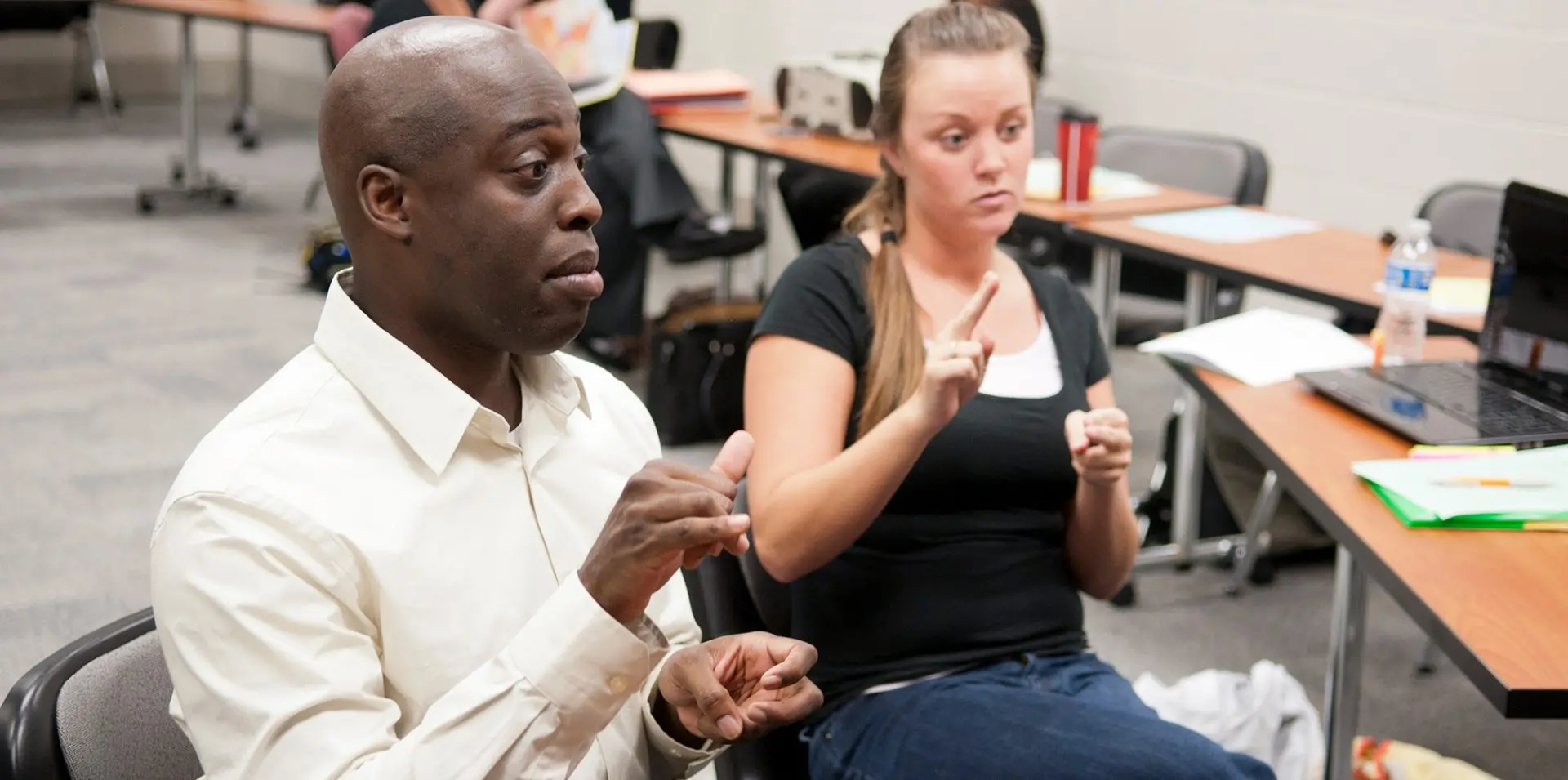Comprehensive Curriculum and Hands-On Experience.
Our courses are designed to provide you with a deep understanding of American Sign Language (ASL) and Deaf culture while also honing your interpreting skills. Through hands-on training and real-world applications, you’ll graduate ready to excel in various areas like education, medicine, law, non-profit work, government, human resources, advocacy, the performing arts, and more.
A Gateway to a Growing Field.
The demand for qualified sign language interpreters is not just a local trend—it’s a nationwide growth area. With the increasing recognition of the importance of accessibility and inclusivity, the need for interpreters is projected to continue rising. By choosing Saint Paul College, you’re not just preparing for today’s jobs; you’re stepping into a career path with a bright and expanding future.
Bridge a World of Inclusive Communication.
Imagine a world where every voice is heard and every idea is shared, irrespective of hearing abilities. That’s the beautiful reality sign language interpreters help create every day! By seamlessly translating between spoken and sign languages, interpreters open up a universe of possibilities for engaging exchanges among people from all walks of life.

